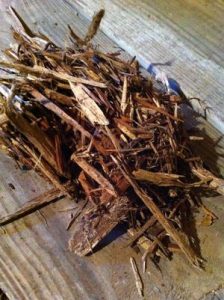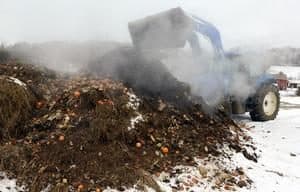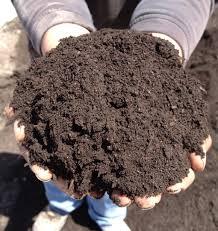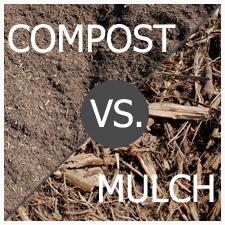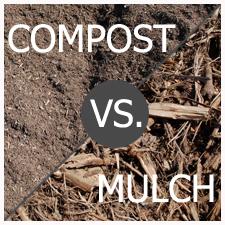
What is the difference between compost and mulch? And when do I use each?
Compost and mulch are terms often used synonymously. However, there is a big difference between the two and are not to be used the same way.
Compost is biologically active material that breaks down from organic matter. Mulch, on the other hand, is any material, organic or inorganic, that covers a given soil surface.
Compost is usually used when it has broken down to a consistency the same as soil. It improves a soil’s structure and increases the availability of existing nutrients. You can use compost to amend a given soil by mixing in the existing soil or by spreading on top to leach down through the soil profile over time.
Compost can be bought or made at home from your own scraps of food or herbaceous plants. Another benefit of compost is it can increase the presence of earthworms, which create pockets in the soil profile for air and water to travel through. This gives the roots of your plants an easier time traveling down to reach water.
Compost also supports soil microbes, necessary living organisms that release nutrition to plant roots. Without a certain amount of organic matter in soil, plants will not thrive. It takes compost to make a healthy soil. It takes a healthy soil for plants to produce beautiful flowers, tasty fruits and vegetables and strong trees.
At Longfellow’s, we carry these different types of compost:
- Cotton Burr Compost (from cotton burr hulls)
- Bluebird Compost (locally made through recycling)
- Cow Manure
- Mushroom Compost
- Milorganite (perfect for the lawn)
- Healthy Grow (also good on lawns)
- Peat Moss
Mulch is used to suppress weed growth, help moderate soil temperature, conserve water, prevent soil erosion, and, if made of organic material, can decompose over time (eventually becoming compost). Mulch is only used on top of a soil and not mixed in.
There are two types of mulch: organic and inorganic. Organic mulch (which was once a living thing) includes wood chips, grass clippings, leaves, and straw. Inorganic mulch (which was never a living thing) includes stones, gravel, plastic, fabric, and rubber. Inorganic mulch will not break down and provide nutrients to the soil.
Wood mulch is used from several parts of a tree:
- Dyed mulch (espresso, red, brown, etc.) is made from shredded wood fiber because the bark of trees won’t absorb the dye.
- Wood chips, bark chunks and pine needles are good for mulching trees and shrubs because they are less likely to be displaced by wind.
- Shredded mulch is great for your annuals and more visual beds with the smaller size particles.
It is a commonly asked question…Does mulch attract termites to my house? No, termites are not attracted to mulch any more than gravel, compost, weed barrier, plant materials or any other material that covers the ground. Termites must have a large chunk of wood to live in, so they are attracted to decks, wood piles, and old stumps. Make sure mulch or any other ground cover does not come in contact with the house siding – a bit of foundation showing is actually a good thing.
